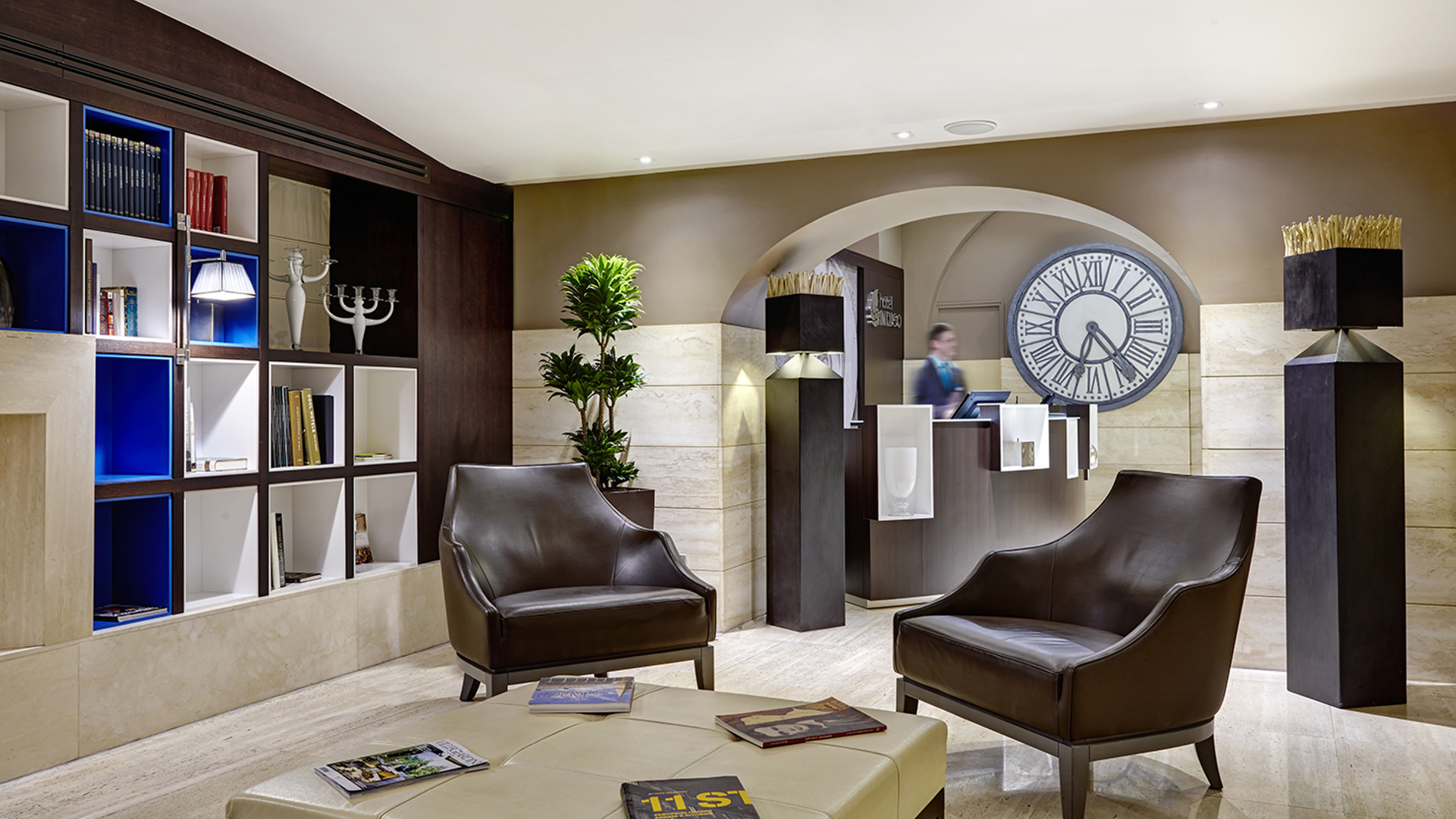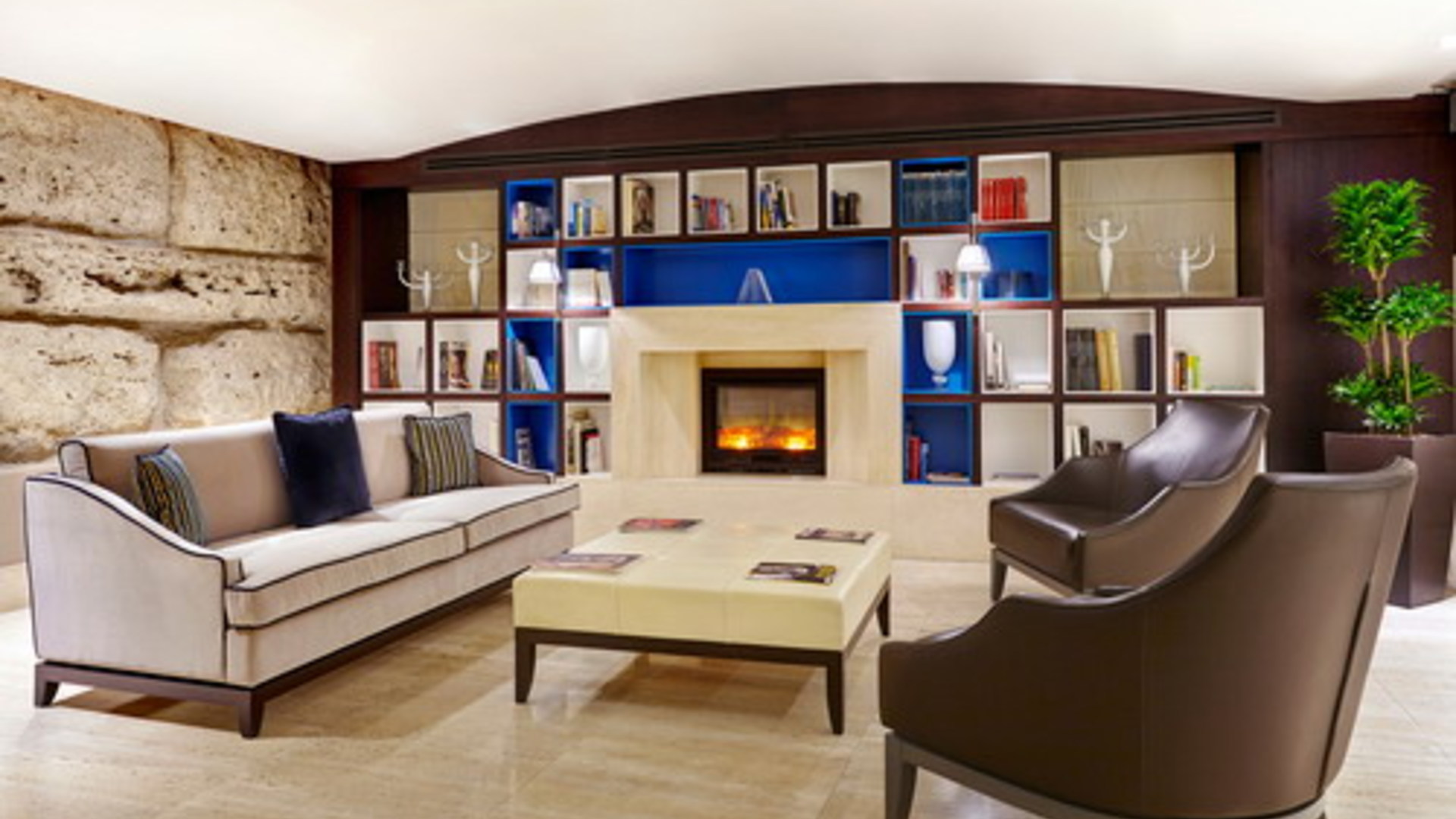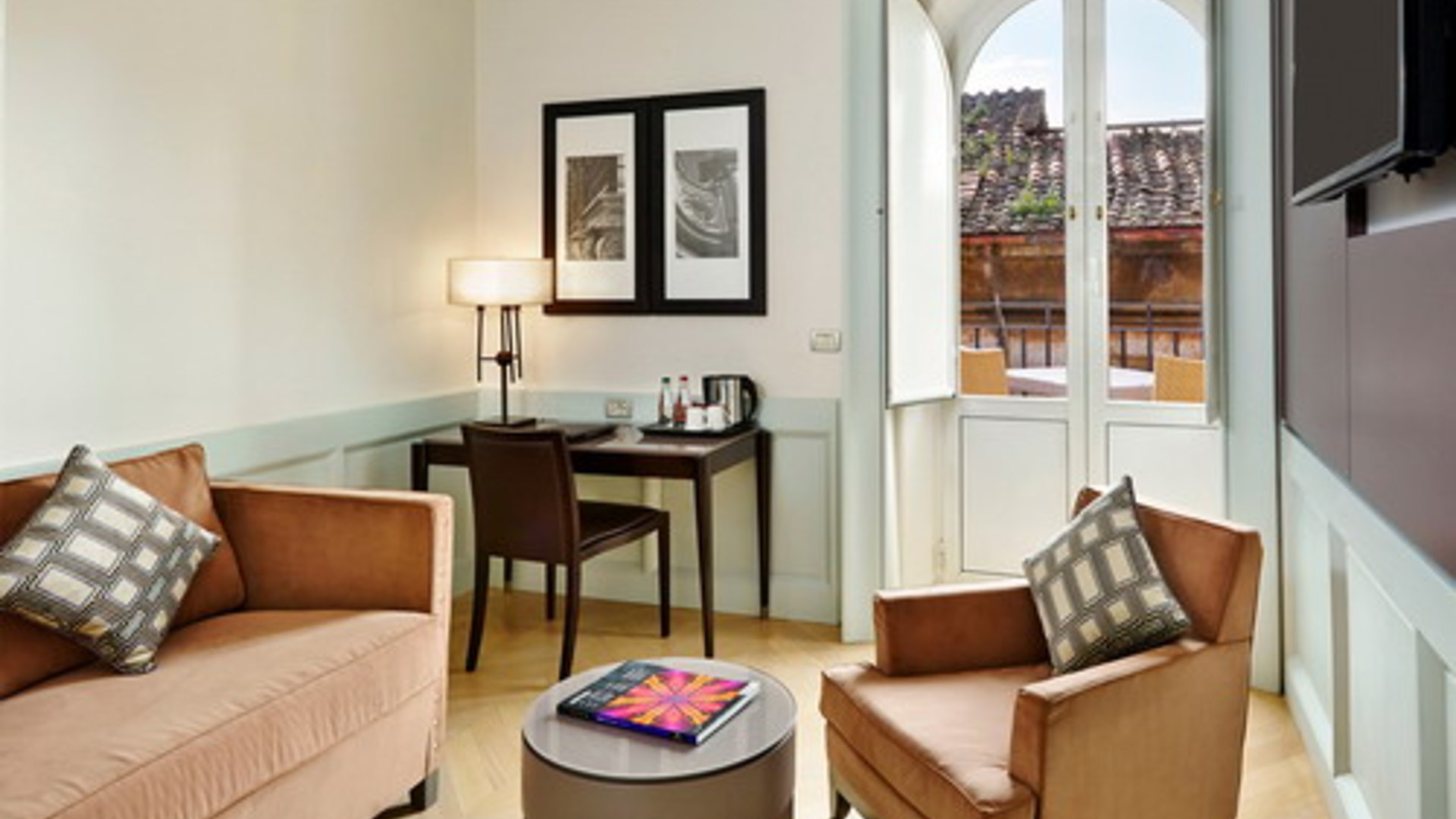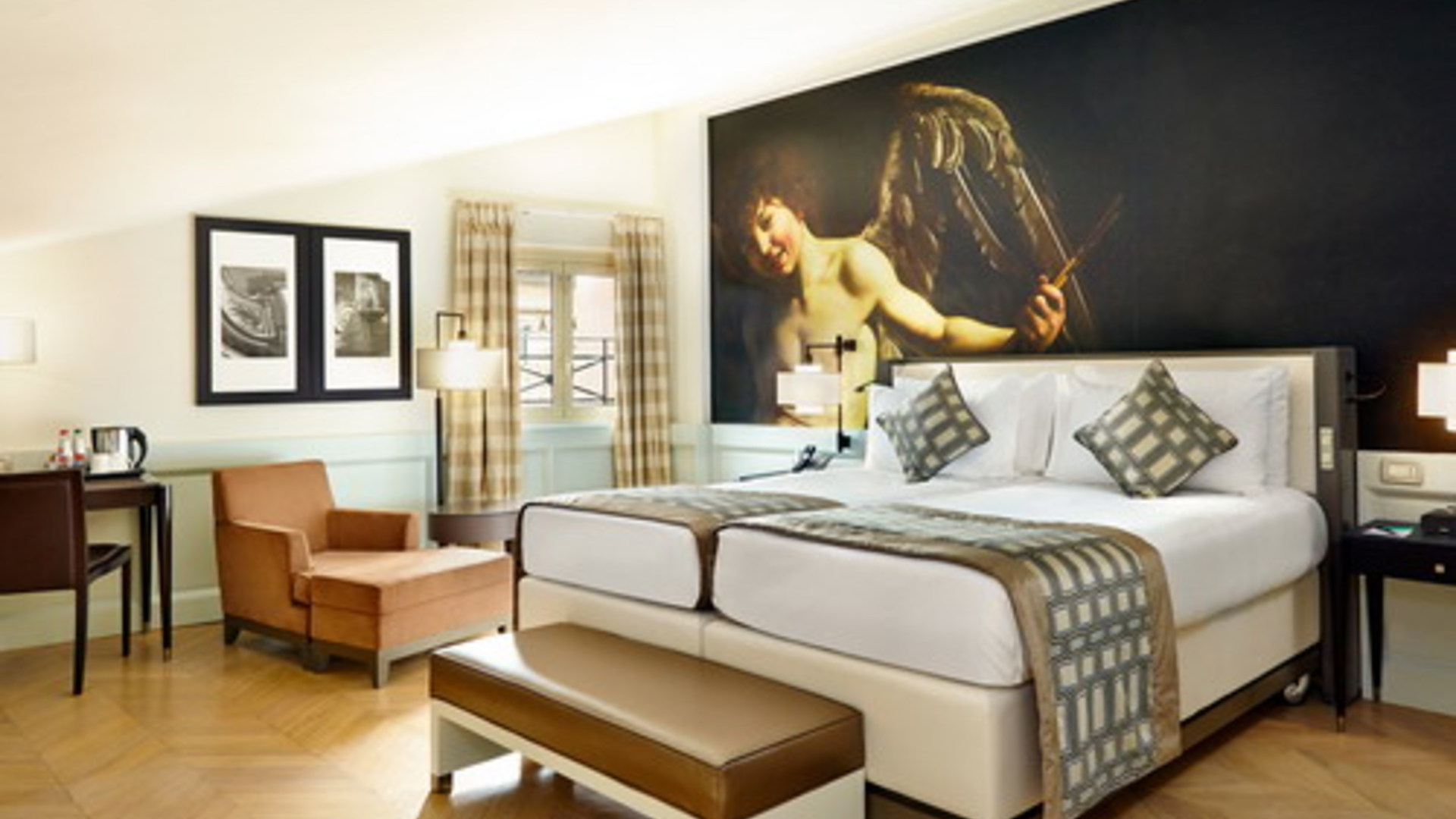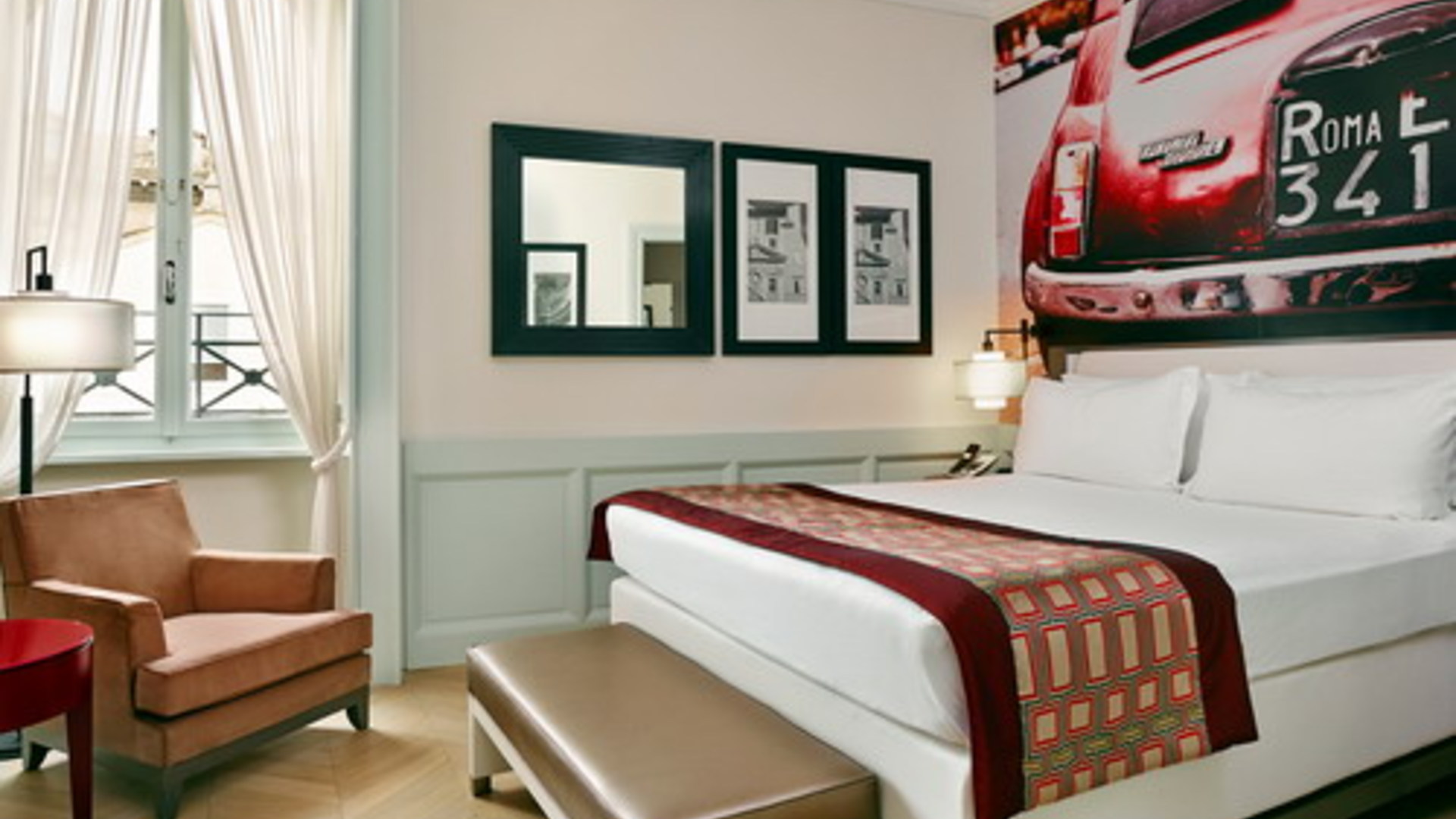INDIGO ROME ST. GEORGES
In Bramante-decorated Via Giulia in Rome, next door to Piazza Navona and Castel S. Angelo, the Indigo Hotel has opened its doors again. Having been acquired by IHG last September, the hotel has undergone extensive refurbishments. The commission went to the CaberlonCaroppi ItalianTouchArchitects studio, one of the showpiece firms of Italian designers for the international hotel industry.
The Italian pair rises to the challenge and wins hands down thanks to their choice of formal solutions, tasteful details, daring and skill in placing contemporary design in the context of ancient Rome’s indelible traces.
The Indigo Rome St. George Hotel is very different from other competitors, and has seen the light within a millennial architectural context, in which many renowned names have applied their creativity and left their imprint. As though a Via Giulia character was transposed into the hotel, so the designers have remained consistent with the street’s artistic allure, which they have recreated in the new rooms and renewed communal areas.
The entrance lobby greets guests with a vast contemporary mirror with a baroque frame, leaning on a wall and reflecting the surrounding area. Stone walls, Roman road paving, original arches and pillars crop up everywhere, and they’re enhanced by a relaxing system created with Chary lighting fixtures. Window curtains have been eliminated, to allow more clarity of vision and make the hotel more transparent in relation to its neighborhood.
Most of the furniture is bespoke, produced by Italpoltrone. The feeling is one of high-level craftsmanship, and if you touch the elements you perceive quality in the finishings and precision in the details. The 64 rooms’ interior décor is a blend of nobility and character, with beacons from ancient Rome featured alongside aggressive items of furniture.
The walls have a well-defined geometry: light grey paneling with touches of blue, like a mini-wainscoting, rises from the ground and breaks up the walls’ sharp colors, while the latter contrast with a white coffered ceiling. The mini-wainscoting runs along the room’s perimeter and ends with a cornice just before a small balcony, where light, simple curtains create a small, delightful bay window. Behind the beds, featuring sophisticated Skopos Fabric linen, gigantic pictures displaying Via Giulia street themes hang on the wall. They only appear to dominate the room, in fact they add something of a rock vibe to it.
When you visit Indigo you find yourself suspended between the Renaissance and modernity. The design and interior choices are its forte, and reveal the designers’ iconoclastic soul, their know-how and daring (as well as that of the ownership) in making unconventional choices.

